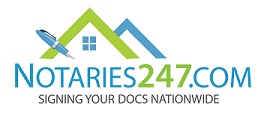Homeowners looking to tap into their home’s equity have two primary options at their disposal: a fixed second mortgage and a Home Equity Line of Credit (HELOC). Both can provide access to much-needed funds, but they function differently and come with distinct benefits. In this blog, we’ll delve into the differences and advantages of these two home equity borrowing options to help you make an informed decision.
**Fixed Second Mortgage:**
**Definition:** A fixed second mortgage, often referred to as a home equity loan, is a lump-sum loan that allows homeowners to borrow against their home’s equity. The loan is repaid in fixed monthly installments, and the interest rate is typically fixed throughout the loan term.
**Benefits:**
1. **Predictable Payments:** One of the significant advantages of a fixed second mortgage is the predictability of monthly payments. With a fixed interest rate and consistent installment amounts, homeowners can budget more effectively.
2. **Low, Stable Interest Rates:** Fixed second mortgages tend to offer lower interest rates compared to unsecured loans or credit cards. This makes them a cost-effective option for large expenses like home renovations or debt consolidation.
3. **One-Time Access:** When you take out a home equity loan, you receive the entire loan amount upfront. This makes it a suitable choice for projects that require a lump sum of money.
**Home Equity Line of Credit (HELOC):**
**Definition:** A HELOC is a revolving line of credit that allows homeowners to borrow against their home’s equity as needed. It operates similarly to a credit card, with a credit limit and variable interest rates. Borrowers can draw funds when necessary, pay down the balance, and then borrow again.
**Benefits:**
1. **Flexibility:** HELOCs offer flexibility by allowing homeowners to access funds when they need them. This is particularly useful for ongoing expenses like home improvements or education, as you can borrow only what you require at a given time.
2. **Variable Interest Rates:** While the variable interest rate of a HELOC can be a disadvantage in a rising rate environment, it can also work to your benefit when rates are low. This adaptability can result in lower borrowing costs.
3. **Interest-Only Payments:** Many HELOCs offer an interest-only payment option, which can be advantageous if you want to manage your monthly expenses more effectively.
4. **Tax Deductions:** In some cases, the interest paid on a HELOC may be tax-deductible if the funds are used for home improvements or other qualifying expenses. It’s essential to consult with a tax professional to determine eligibility.
**Differences:**
1. **Repayment Structure:** The most significant difference between the two is the repayment structure. A fixed second mortgage requires regular, fixed payments, while a HELOC allows for flexible, variable payments based on the amount borrowed.
2. **Access to Funds:** A fixed second mortgage provides a lump sum, while a HELOC allows homeowners to borrow funds as needed, up to a predetermined credit limit.
3. **Interest Rates:** Fixed second mortgages have fixed interest rates, while HELOCs often come with variable rates that can change over time.
Choosing between a fixed second mortgage and a HELOC depends on your financial needs and preferences. Consider your financial goals, the purpose of borrowing, and your tolerance for interest rate fluctuations. Both options can be valuable tools for leveraging your home’s equity, and the right choice will ultimately align with your unique circumstances and objectives. It’s advisable to consult with a financial advisor or lender to determine which option suits your needs best.






